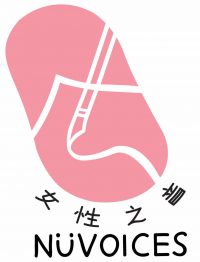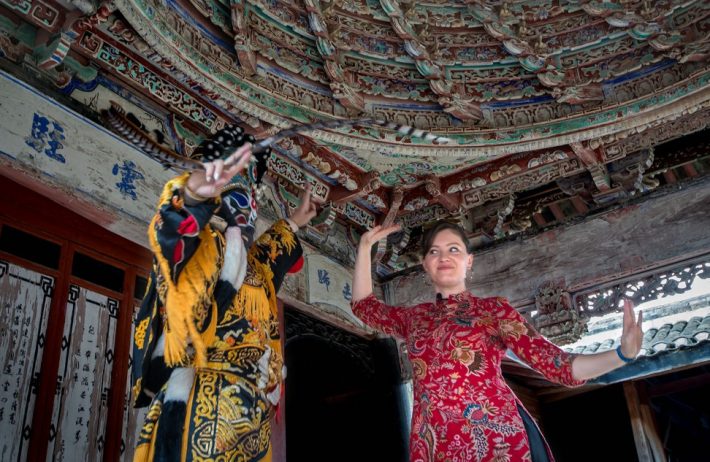BY ELYSE RIBBONS
Walking through a village in Ninghai—a county in the Chinese city of Ningbo—on a sunny afternoon, I found the oppressive heat to be in distinct contrast with the buoyant laughter of three children running along up ahead of me. They knew where I was going well before I did, though I suppose the whole village knew why I had come that day.
It was July of 2018, and I had been lured to this fertile mountain village, with dusty roads and sun-browned children with bright white smiles, by officials from the Ningbo and Ninghai Tourism Bureaus. Ningbo, a major port and industrial hub in east China’s Zhejiang province, lies south of Shanghai on Hangzhou Bay.
For what exactly? A performance, they said. A performance like none I had seen before. When I tried to get more details out of them, they used a local dialect to describe it, but I couldn’t understand. Finally, they settled on a Mandarin description, something to do with brushing teeth, I think? I almost didn’t go.
But, as my friends already know, I am obsessed with Xiqu, traditional Chinese Opera. Through the process of earning my Masters of Fine Arts in Peking Opera at the National Academy of Chinese Theatre Arts in Beijing, I had discovered that Peking Opera was really a crystallization of a multitude of ancient theatrical art forms from all over the country. So each time I went to a new region of the Middle Kingdom, I always tried to find the local traditional theater troupes and check out a show.
While Peking Opera is perhaps the most famous of all the Chinese Opera styles, Ningbo is home to many different varieties of traditional Xiqu. The Zhejiang Yue Opera, which one can find all over the province, Yongju which is performed in Ningbo dialect, and this Boar-Tooth Opera, which can only be found in this area of Ninghai.
Despite my exhaustion and the humidity, I decided to trek through Ninghai to this mountain village to see this archaic art form. The officials had hinted that this performance was special because it was a modern twist on the classic. The artist had even performed as part of the Spring Festival television gala, and had won many awards. Though it wasn’t until after the show that I understood the “twist” that the officials had mentioned.
Turning down another alley, we made our way to the door of that ancient theater. Stepping over the high threshold with care, I was taken aback by the faded beauty of the antiquated wooden structure. A “fishing pier” stage jutted into the audience, with rows upon rows of weathered wooden benches radiating out in three directions, and a ceiling so ornate it would be easy to strain one’s neck for the staring.
Taking a much-needed sip of tea as sweat dripped down my back, I settled down onto one of the benches. As we waited for the artist to finish preparing, I took the opportunity to take photos of the surroundings: the gorgeous painted ceiling, the smiling children, the villagers who had joined us for the performance.
As I looked around, I noticed the back walls had their classical opera paintings covered with faded “big letter” propaganda phrases. Like angry red scars. I read them aloud, and some of the villagers nodded, while some of the officials looked uncomfortable. I used to have an anti-American propaganda poster from the Korean War in my theater office. I liked the juxtaposition and reminder that history is subjective.
We were saved from the potentially prickly conversation about the sensitive topic of the cultural revolution with the announcement that the performer was ready, and the show was about to begin. Turning back to the stage, I pulled out my phone to prepare for the show. Fortunately, most traditional artists in China are happy to have you film their performances.
The music, prerecorded, began with an electric tremor as the speakers warbled out the tune: a combination of traditional opera instrumentation and modern club music. The performing artist stepped out from behind the door at the back of the stage, and walked in a large semi-circle to the front. Looking out over the distance, the performer paused, their face painted black with gold, white and red lines creating large eyes and an angry mouth. Suddenly, with a crash of cymbals and drums, they turned to the audience, their expressive black eyes locking onto mine. And then with a swish of their golden robes, they turned away again.
And then, it happened.
They whirled and with a crescendo, two large teeth popped out of their mouth, like tusks. They disappeared as suddenly as they had appeared. Threatening, and yet intriguing. More spinning, more slashing of the air with dramatic arm gestures and kicks. The feathers in their helmet like a halo of frenetic effort. And more teeth appeared, and disappeared.
With utter fascination I watched the entirety of the show with open-jawed joy. Afterwards the officials asked what I had thought of it, and I expressed such admiration that they demanded the artist perform it again. I would have protested this demand had I not also desired to see the strangely feral and creatively psychotic performance again. I learned that they were boar’s teeth that the artist popped in and out of their mouth, which only added to the drama.

During the second performance I took the opportunity to look around at the well-coiffed officials in their modern suits, the white-haired villagers in well-worn clothes, and the children in bright t-shirts and jeans. How lovely to have this heritage and culture at their fingertips. Noticing again the faded red letters along the back wall, I was reminded of the rarity of these art forms having survived the trials of the past few generations.
It was only after the show that I realized what was so very special about this performance, and the performer.
After the local official introduced me, the artist spoke in their natural voice, and I was floored. So this was the twist! The blustering juggernaut performance of a very yang-filled male character was done by a young woman, a performer named Xue Qiaoping!
For its entire history, Boar-tooth Opera had been performed exclusively by men, but Xue said that they had to change this rule recently, in order to maintain the tradition. When the young men had lost interest in the art form, they began to open it up to female performers. It wasn’t until midway through the last century that women in China began to step onto the stage. Xue had been interested, and the master had happily worked with her. And her hard work had paid off, this little-known regional art form had aired on national television and garnered a lot of attention.
Like with many traditions, they can often be improved with a little innovation. And the Boar-tooth Opera is a perfect example. While the role that she had been performing was very male indeed, there are also plenty of strong female characters in classical Xiqu texts for her to choose from. I look forward to seeing what else she brings to the stage.
Her sweet countenance was in stark contrast to her violent makeup. But underneath that makeup, I sensed a little mischief, and so asked her if she had perhaps brought a little bit of female rage-power to the role. She smiled and stuck out two more giant boar’s teeth as an answer.
Watch the Boar-tooth opera performance by Xue Qiaoping online here.
About the author
Elyse Ribbons, when she isn’t wandering around China filming and creating, teaches yoga in Chapel Hill, NC and is the Director of Communications for the non-profit United Chinese Americans. She is on Twitter and Instagram @iheartbeijing
About the editor
Jessie Lau is a journalist, researcher and artist from Hong Kong covering identity, human rights and politics—with a focus on China and other parts of Asia. Her work has been published by Foreign Policy, Channel 4 News, The Nation and The Economist, among others. She serves as a Board Member and Online Editor-in-Chief at NüVoices, and was formerly a Hong Kong and China reporter with the South China Morning Post. Website: www.laujessie.com. Twitter: @_laujessie

